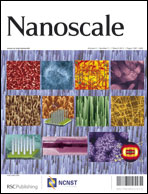Charge photogeneration in hybrid solar cells: A comparison between quantum dots and in situ grown CdS
Abstract
We demonstrate that blend films containing poly(3-hexylthiophene-2,5-diyl) and in situ grown CdS display a greater yield of photogenerated charges than a blend containing an equivalent amount of pre-synthesised CdS


 Please wait while we load your content...
Please wait while we load your content...